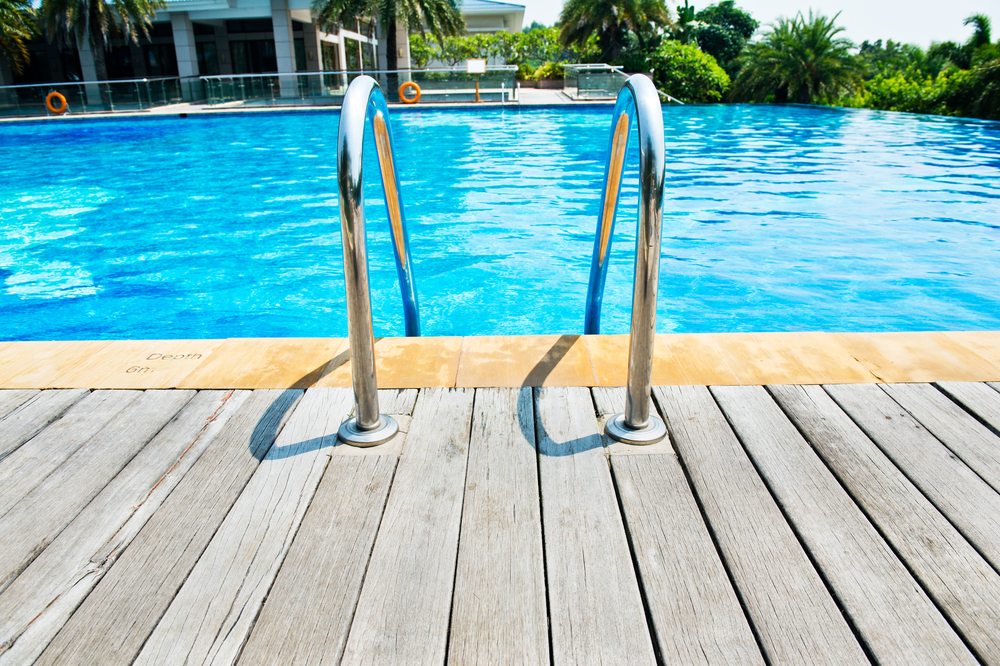
If you have a pool, fun in the water is just a few steps away from your house. Pools can be a great way for kids to cool off and spend their free time during the summer. If you’re having a party, pools can be a great draw.
They can also be deadly, particularly for children.
“Having an unfenced pool is like having an uncaged lion in your backyard,” Morgan Miller, whose daughter drowned in a friend’s pool, told Parents.com. “To a child, that big furry animal could look like something fun to play with. It’s appealing and tempting. But we as adults know that a lion is deadly and can kill your child.”
According to Stop Drowning Now, drowning is the number one cause of death due to accidental injuries for children ages 1 to 4.
Drowning can happen fast — about as long as it takes to post on Instagram, take a bathroom break, or grab a hot dog from the grill.
Drowning is also entirely preventable if you take the right steps. Here are some essential tips:
1. Know the signs. When a kid is drowning, it doesn’t look like what we might expect—
splashing and flailing around. According to Parents.com, “Kids drown silently and quickly, often when they are vertical in the water with their head tipped back.”
2. Have a designated ‘water watcher.’ No, you don’t necessarily need to hire a licensed lifeguard, but if you’re having a kids’ party, make sure one parent is watching the pool. You can take turns so all parents get to enjoy the party, but it’s important to take this responsibility seriously. One way of doing that is by wearing a ‘water watcher’ tag. You can print one out from safekids.org or poolsafely.gov.
3. Watch your kids. If it’s just you and your kids, the responsibility for keeping an eye on things falls to you. Put away your phone but keep it handy in case you need to call 911. Avoid anything else that might draw your attention away from the pool, yes even reading.
3. Intervene before a kid drowns. Better to do something before it becomes a real problem. “You intervene when a kid may be even slightly in trouble, so he doesn’t get to the point of drowning,” Linda Quan, M.D., a professor of pediatrics at the University of Washington, in Seattle, told Parents.com.
4. Know CPR. Make sure you have the skills you need if your child has started drowning.
5. Teach your children how to swim. Besides helping keep them safe, it’s a life skill that will enable them to have more fun in the water. At a minimum, parents should make sure their children know how to tread in and float on the water and are able to get out of the pool on their own.
6. Use fences, gates, and pool covers. Follow these obvious but critically important safety precautions. Install a fence around your pool. A four-foot-high fence is ideal with no openings that a small child could crawl through. Make sure the gates to the pool are latched. Cover the pool when you aren’t using it.
7. Protect your kids. Weaker swimmers should wear life jackets around pools. Don’t count on ‘water wings’ and other floating toys to do the job. Tie up loose hair to prevent it from being caught in a drain.
8. The risk of uncovered drains. A small child can be trapped in an uncovered drain due to its suction power. Their bathing suits, hair, fingers, and arms and legs could become caught in the drain. If you see a drain that is uncovered or has a loose or broken cover, don’t let your children in the pool and notify the owner. Drains are a hidden pool hazard that can cause deadly injuries. For more, see the Abbey’s Hope Charitable Foundation information page.
9. Educate your children. In addition to teaching them how to swim, make sure your children know not to play with drains, run around pools, and push others into the pool. PoolSafely.gov has some apps with games to make pool safety lessons fun and engaging for children. SafeKids.org also has some helpful resources for families.
Sources: Parents.com, Stop Drowning Now, Abbey’s Hope Charitable Foundation, PoolSafely.gov, and SafeKids.org.
